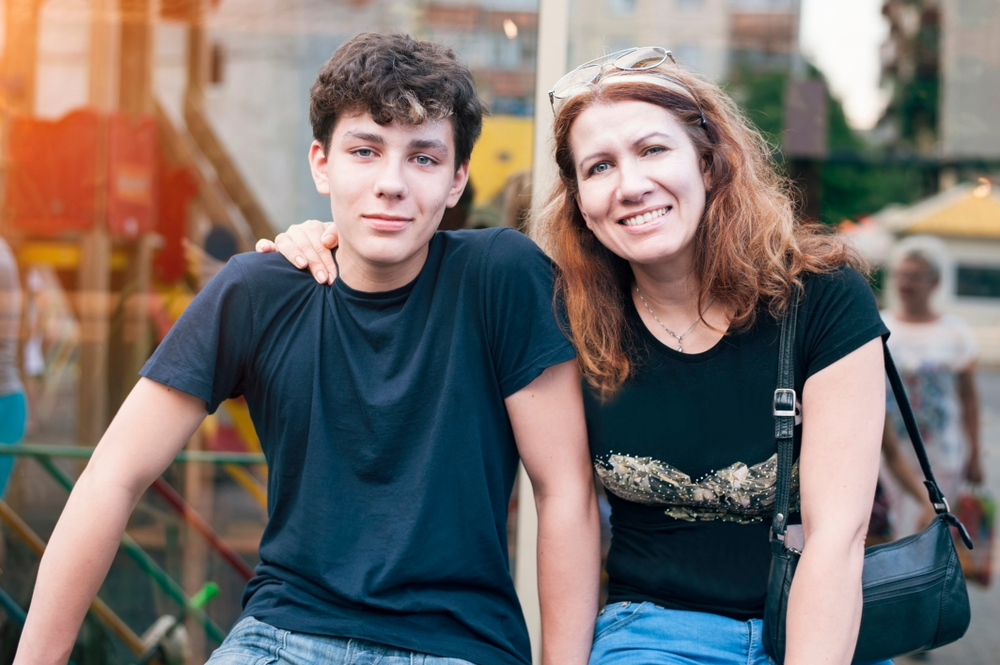
Thinking back to when I was diagnosed with depression as a teenager, one of the main things I remember was a feeling of not being understood. At a basic level, sure, the psychiatrists and therapists I spoke to understood that I felt low, that I struggled to find motivation to do anything, and that all I wanted was a nap – but beyond that, at times it felt like we were just following a flowchart from a textbook and that somehow, eventually, I would be “fixed”. As an adult now doing research into teenage depression, this memory has stuck with me and has led me to question how we approach this topic. Is our understanding of teenage depression based on their lived realities, or is it just based on what we think we know? And if the answer is the latter, is this something we should be looking to change? The paper this blog is about seems to consider some of the same questions.
Adolescence is a vulnerable time for the development of mental health problems, including depression. Worldwide, it is estimated that 34% of adolescents experience elevated symptoms of depression, with 8% being clinically diagnosed with Major Depression Disorder (Shorey et al., 2022).
Adolescent depression can result in a range of negative long-term consequences, such as difficulties in education, social relationships (Clayborne et al., 2019), and experiencing depression in adulthood (Johnson et al., 2018). It is therefore a significant public health concern. However, adolescent depression still often remains undetected and subsequently untreated (Mullen, 2018).
One argument for this is that, historically, our understanding of adolescent depression has been based on findings in adult populations (Mullen, 2018). A problem with this top-down approach is that it does not consider the influence of the adolescent developmental stage, which is a period of rapid biological, cognitive, social, and emotional change (I’m sure I don’t need to remind you about what navigating your teens was like!). Due to these differences, it is not necessarily appropriate to assume that depression in adolescence will present the same way as it does in adults, nor that adolescents will respond to treatments in the same way that adults do. In fact, they don’t – and with some many potential combinations of symptoms that make up depression (Zimmerman et al., 2015), it’s not that surprising. Therefore, there is a need for further research into how depression is experienced by adolescents, which can inform identification, prevention, and treatment.
This blog will summarise a recent review led by Eve Twivy, a Clinical Psychologist and researcher at the University of Oxford, which aimed to identify good quality papers exploring adolescents’ experiences of depression, with recommendations for clinical practice.

How are we currently supporting adolescents presenting with depression in clinical practice? Are we tailoring our approach, or are we treating them like mini adults?
Methods
Twivy and colleagues (2023) searched 4 electronic databases to identify papers written in English which used qualitative methods to investigate the lived experience of depression in young people aged 10-19 years. As definitions regarding what ages count as ‘adolescence’ have expanded over the years, the authors decided to include studies which had samples up to 24 years old, but which still had an overall average age between 10-19 years.
Data from studies that met the above inclusion criteria were independently screened and extracted by Twivy, with the second author (Kirkham) double-screening a percentage of the articles. The reference lists of included articles were also scanned to identify any additional papers. The methodological quality of all included studies was assessed using the Johanna Briggs Institute checklist for qualitative research.
The authors then conducted a meta-aggregation, where findings (themes or categories extracted from the included studies) were grouped by shared characteristics or meanings.
Study characteristics
Database searches retrieved 4,044 articles. After removing duplicates, full-text screening, and checking reference lists, 15 studies were included.
Articles were published between 2002 and 2021, and all were conducted in Western countries. All studies focused on the lived experience of adolescent depression and collected data through interviews. Sample sizes ranged from 5 to 77, with participants aged between 11 and 22 years old.
Quality assessment
Authors used the 10-item Johanna Briggs Institute checklist for qualitative research and found that the included studies met 40% to 100% of the criteria, indicating moderate to excellent quality.
Results
Aggregation of 56 findings led to 16 categories, which were further aggregated into 3 main findings.
Finding 1: Causes
- Participants identified multiple potential causes for the development of their depression.
- These causes could be external (e.g., traumatic life events, family dynamics, periods of transition, loss), which evoked feelings of inadequacy and anger in adolescents.
- These causes could also be internal (e.g., genetics, personality, stress response), which contributed to feelings of failure and self-blame.
- Sometimes, adolescents struggled to identify a cause – for many adolescents, depression was “hard to make sense of”, leading to feelings of distress.
Finding 2: Symptoms
- Participants described a range of experienced symptoms, which could be psychological, physical, and social.
- The most common finding was a sense of social disconnect, where adolescents felt withdrawn and isolated from those around them.
- Participants also described experiencing an “altered sense of self”, resulting from not being able to engage with everyday activities to the same degree as their normal self or their peers. This led to a sense of losing their identity.
- Prolonged low mood, a negative outlook on life, fatigue, anger, fear, and overwhelming distress were also frequently mentioned symptoms.
Finding 3: Coping
- Participants described positive and negative ways of coping with depression, such as:
- The presence or absence of social support
- Self-protective strategies to protect themselves from difficult emotions
- Use of social media
- Oversleeping to avoid the feeling of depression
- Confronting depression
- Risky behaviours like alcohol misuse and self-harm.

Adolescents describe experiencing social disconnect and an altered sense of self, alongside feelings such as low mood, fatigue, anger, and fear.
Conclusions
The authors concluded that:
Adolescents with depression experience considerable distress. Adolescents may be confused about what is happening to them and may tried to hide their symptoms, thus accurate assessment of depression could take time. This review also indicates that the symptoms described by adolescents with depression do not fully map onto diagnostic criteria […]
Social disconnection and anger were described by adolescents but do not feature in diagnostic criteria […]
To make progress in recognising and understanding adolescent depression, there is a need to move away from viewing adolescents as smaller versions of adults.

From a lived experience perspective, adolescent depression is not the same as adult depression.
Strengths and limitations
The authors conducted a rigorous, timely review on a topic of great importance, adhering to Preferred Reporting Items for Systematic Reviews and Meta-Analyses (PRISMA) and pre-registering the review on PROSPERO before conducting any database searches. The authors demonstrate good Open Science practices, being transparent with their methods and including appendices that detail their search strategy, alongside a reflexivity statement which details how the authors’ experiences, values and beliefs may have influenced how they conducted the study and interpreted the data.
However, there are some limitations that need to be considered:
- The authors only included articles written in English and published in peer-reviewed journals. Although they scanned the reference lists of included articles, grey literature (information that has been published outside of traditional routes, like white papers and reports commissioned by charities) was not included, meaning there is a risk of publication bias.
- Inter-rater reliability at the outset of screening was moderate, with a Cohen’s kappa of .46. While the authors adjusted their screening criteria and ended up with almost perfect agreement (κ = .90), it is important to highlight that potential initial issues with accuracy and reliability.
- Only one author screened 100% of the papers. Although single screening can be more efficient than double screening, it does increase the risk of relevant studies being missed, again impacting the accuracy of the review.
- We know that some adolescents are at higher risk of developing depression than others, such as females, older adolescents, and members of minority groups. While the authors highlighted some subgroup differences, they were not explored in greater depth. Going forward, researchers need to focus on developing our understanding of intersectionality within adolescent depression, moving to consider the impact that factors like age, gender, ethnicity, and sexuality may have on adolescents’ experiences of depression.
- Finally, articles were only included if the participants were diagnosed with depression. As we know that adolescent depression is under-diagnosed (Mullen, 2018), and that experiencing symptoms of depression can still pose risks to quality of life (Balázs et al., 2013), this means that relevant lived experience perspectives could have been excluded, limiting the findings. Equally, if the authors had broadened their criteria beyond diagnosis, this could also limit the findings – sometimes you just can’t win!

This is a rigorous, well-designed, and transparent review, but future research needs to be more inclusive and consider intersectionality.
Implications for practice
This review has a clear message for practitioners: Do not assume that adolescent depression looks like adult depression.
Practitioners should aim to engage in professional curiosity when meeting a young person experiencing depressive symptoms and recognise that while it is important to use standardised diagnostic criteria and validated self-report measures, these may not capture all experienced symptoms. Keep a look out for symptoms such as low mood, fatigue, social disconnect, anger, and distress, and do not be surprised if symptoms like anhedonia (loss of interest and/or pleasure in previously enjoyable activities) do not show up, despite being one of the three main criteria in the DSM.
Practitioners should also be aware that adolescents may be unsure about the cause of their depression, and a lack of understanding or fear of stigma may lead to hiding their symptoms. Building a trusting relationship with help-seeking adolescents and providing them with a safe space to talk may help with disclosure.
As mentioned earlier, I was diagnosed with depression as a teenager – and it was a relief to see my own lived experience reflected in this review and the included studies! On the surface, it seems like social withdrawal and isolation should be obvious inclusions in the DSM and ICD, particularly given the consistent links drawn between depression and loneliness (learn more in Zuva’s blog on associations between loneliness and common mental health problems, and Anton and Eiluned’s blog on mindfulness to reduce loneliness in young people), and yet it is still absent. You really cannot underestimate the impact that social support (or the lack thereof) can have on a young person, and I think this is one of the key findings for parents, teachers, and practitioners to take away from this review: make sure that your young person has and feels able to access a wide range of different sources of social support, to help maintain the feeling of social connectedness.

Keep an open mind when thinking about adolescent depression and consider symptoms beyond those that are present in the DSM, ICD, and common self-report measures.
Statement of interests
Nina was not involved with the current study or the authors, but is working on a qualitative study focused on adolescents’ experiences of fatigue within depression.
Links
Primary paper
Twivy, E., Kirkham, M., & Cooper, M. (2023). The Lived Experience of Adolescent Depression: A Systematic Review and Meta-Aggregation. Clinical Psychology & Psychotherapy. https://doi.org/10.1002/cpp.2834
Other references
Balázs, J., Miklósi, M., Keresztény, Á., Hoven, C. W., Carli, V., Wasserman, C., … & Wasserman, D. (2013). Adolescent subthreshold‐depression and anxiety: Psychopathology, functional impairment and increased suicide risk. Journal of Child Psychology and Psychiatry, 54(6), 670-677. https://doi.org/10.1111/jcpp.12016
Clayborne, Z. M., Varin, M., & Colman, I. (2019). Systematic review and meta-analysis: adolescent depression and long-term psychosocial outcomes. Journal of the American Academy of Child & Adolescent Psychiatry, 58(1), 72-79. https://doi.org/10.1016/j.jaac.2018.07.896
Johnson, D., Dupuis, G., Piche, J., Clayborne, Z., & Colman, I. (2018). Adult mental health outcomes of adolescent depression: a systematic review. Depression and Anxiety, 35(8), 700-716. https://doi.org/10.1002/da.22777
Mullen, S. (2018). Major depressive disorder in children and adolescents. Mental Health Clinician, 8(6), 275-283. https://doi.org/10.9740/mhc.2018.11.275
Shorey, S., Ng, E. D., & Wong, C. H. (2022). Global prevalence of depression and elevated depressive symptoms among adolescents: A systematic review and meta‐analysis. British Journal of Clinical Psychology, 61(2), 287-305. https://doi.org/10.1111/bjc.12333
Zimmerman, M., Ellison, W., Young, D., Chelminski, I., & Dalrymple, K. (2015). How many different ways do patients meet the diagnostic criteria for major depressive disorder?. Comprehensive Psychiatry, 56, 29-34. https://doi.org/10.1016/j.comppsych.2014.09.007
Photo credits
- Photo by Jake Ingle on Unsplash
- Photo by Luke Porter on Unsplash
- Photo by Toa Heftiba on Unsplash
- Photo by Priscilla Du Preez on Unsplash
- Photo by Clay Banks on Unsplash
- Photo by Markus Spiske on Unsplash
